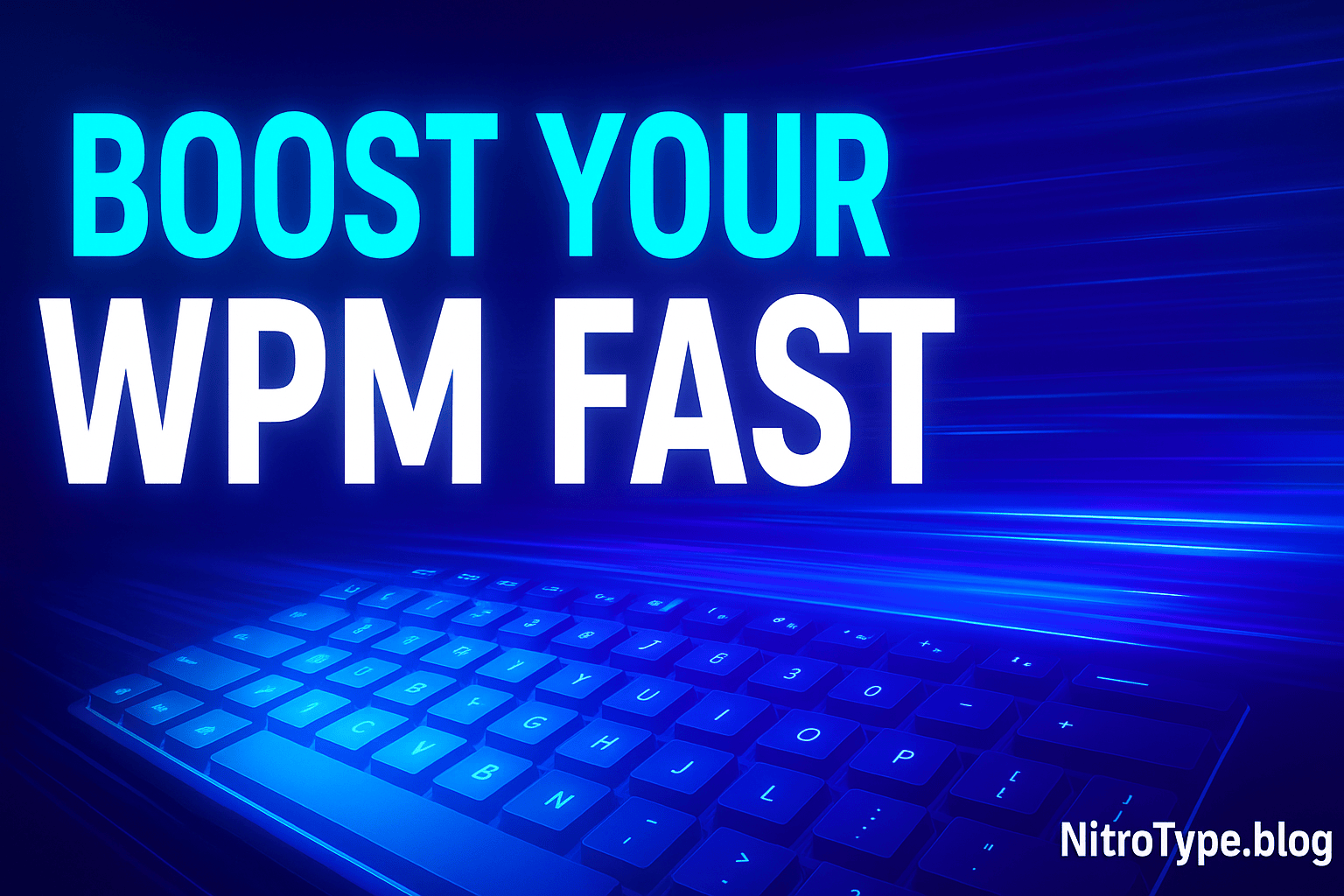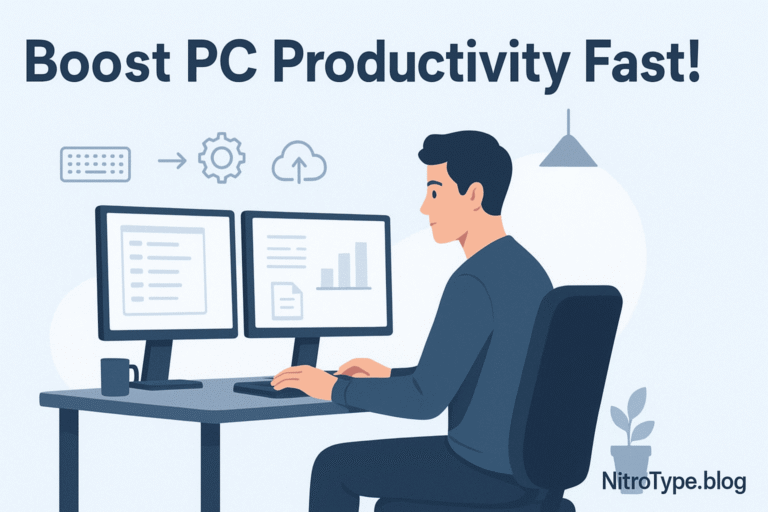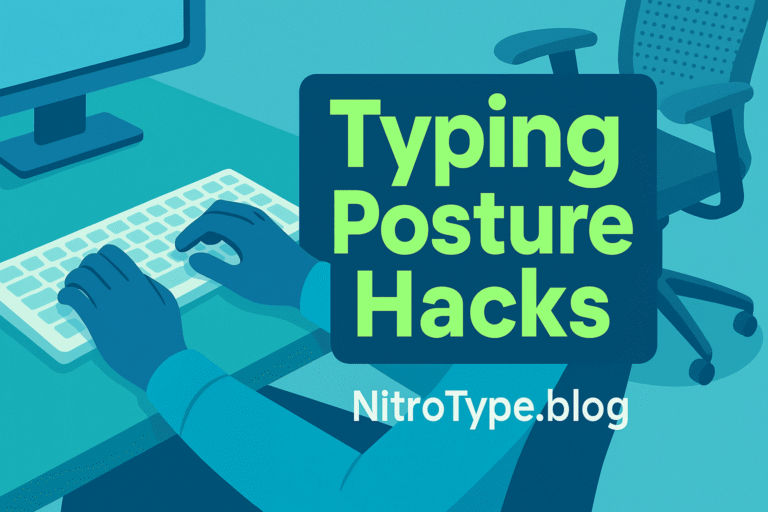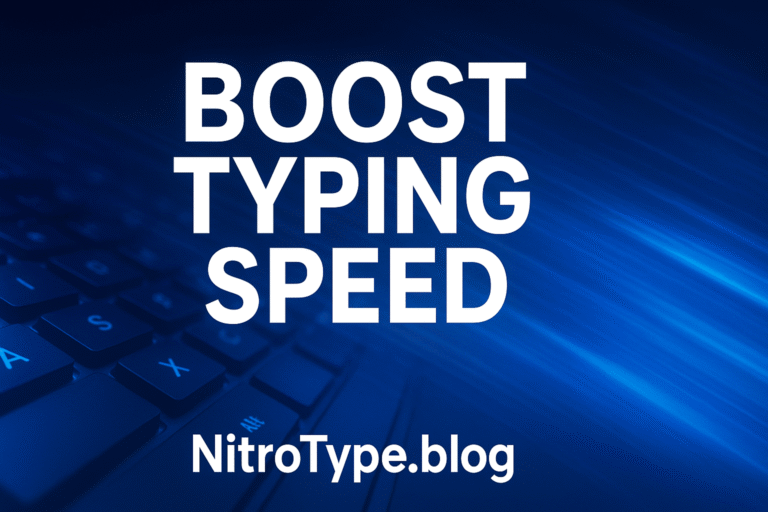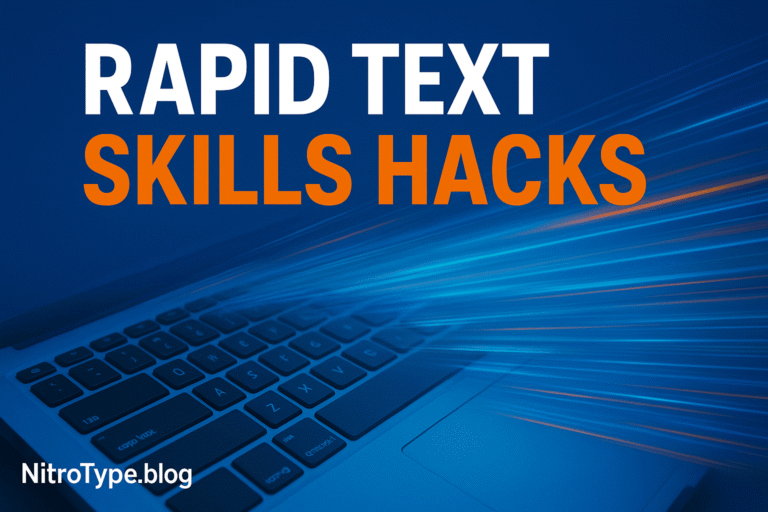🖋 Improve Your Word Per Minute (WPM) in 7 Simple Steps
Typing has become more than just a skill — it’s a superpower in the digital age. Whether you’re writing emails, coding, playing typing games, or competing in online typing battles, your typing speed determines how efficiently you work and how fast you can communicate. That’s where Word Per Minute (WPM) comes in. In this guide, you’ll learn exactly what WPM means, why it matters, and — most importantly — 7 practical steps to improve your Word Per Minute (WPM) quickly and effectively. By the end, you’ll have an actionable plan to type faster, make fewer mistakes, and unlock your full typing potential.
Table of Contents
What is Word Per Minute (WPM)?
Word Per Minute (WPM) is the universal metric for measuring typing speed. One “word” is standardized as five keystrokes, including letters, numbers, spaces, and punctuation. For example: If you type 250 characters in one minute, that equals 50 WPM (since 250 ÷ 5 = 50).
👉 WPM focuses on speed, but accuracy is equally important. A typist who types 100 WPM with 20 mistakes per minute is less effective than someone typing 70 WPM with perfect accuracy. If you want a deeper dive into how typing speed is calculated and taught, check out the free lessons at Typing.com.
Why Your Word Per Minute (WPM) Matters
Typing faster isn’t just about bragging rights. Your WPM impacts your productivity, learning, and even gaming performance.
- Professional Benefits: High WPM makes a huge difference for writers, coders, office professionals, and students. Imagine completing reports in half the time!
- Competitive Gaming: Typing games like NitroType reward quick reflexes and speed. A higher WPM helps you dominate races and improve rankings.
- Daily Efficiency: Whether chatting, researching, or note-taking, higher typing speed saves valuable time.
On average:
- Beginners type around 25–35 WPM
- Regular users average 40–50 WPM
- Skilled typists reach 70–90 WPM
- Professionals and competitive typists often exceed 100 WPM
👉 Want to see how you stack up in real competition? Try this fun Typing Battle Online challenge and test your skills against others.
🖋 Improve Your Word Per Minute (WPM) in 7 Simple Steps
Improving your typing speed isn’t about quick hacks — it’s about steady, consistent practice with the right strategies. Here are seven proven steps to boost your WPM.
Step 1 – Master Proper Typing Technique
Typing fast starts with typing correctly. Many beginners rely on “hunt and peck” — looking at the keyboard and pressing keys one by one. That slows you down. Instead:
- Place your fingers on the home row keys: ASDF (left hand) and JKL; (right hand).
- Keep your wrists slightly raised and relaxed.
- Use all ten fingers instead of just two or three.
Correct posture and hand placement may feel slow at first, but they’ll pay off in long-term speed and efficiency.
Step 2 – Use Typing Tests Regularly
The best way to measure improvement is by testing yourself. Online typing tests give you instant WPM scores, accuracy percentages, and progress reports.
- Start with 1-minute tests for quick practice.
- Work up to 5-minute tests for endurance and consistency.
- Track your results weekly to see improvement.
These tests also help you recognize weak keys (letters you struggle with) so you can focus on improving them.
Step 3 – Focus on Accuracy Before Speed
A common mistake is rushing to type faster, which often leads to more typos. Ironically, this lowers your actual WPM since mistakes slow you down. Instead, focus on typing without errors.
- Slow down and prioritize accuracy.
- Once you’re consistently typing correctly, your speed will naturally increase.
- Remember: slow is smooth, and smooth becomes fast.
Step 4 – Train with Typing Games
Typing practice doesn’t have to be boring. Games like NitroType, Monkeytype, and Keybr make it fun by combining speed, competition, and rewards. These games help you:
- Stay motivated through challenges.
- Improve reaction times and adaptability.
- Compete against others for real-time feedback.
Gamified learning keeps you consistent — and consistency is key to boosting your Word Per Minute (WPM).
Step 5 – Build Muscle Memory
Typing speed comes from muscle memory — when your fingers automatically know where the keys are. The only way to build it is through repetition and practice.
- Practice daily, even for just 10–15 minutes.
- Focus on tricky key combinations (like “th” or “qu”).
- Avoid looking at the keyboard — train your fingers to “remember.”
Over time, typing becomes second nature, and your WPM increases naturally.
Step 6 – Expand Your Vocabulary
The more words you know, the easier it is to type them quickly. Expanding your vocabulary also improves accuracy because you won’t stumble on unfamiliar words.
- Read articles, books, and blogs daily.
- Practice typing words you don’t use often.
- Mix in numbers, punctuation, and symbols to be well-rounded.
This is especially helpful if you compete in typing games that use diverse word sets.
Step 7 – Track Your Progress and Set Goals
Progress fuels motivation. Setting small goals keeps you engaged. For example:
- Week 1: Reach 40 WPM consistently.
- Week 2: Push to 50 WPM.
- Week 4: Aim for 60+ WPM with 95% accuracy.
Use free online WPM calculators or apps to measure your growth over time. Celebrate small wins — every improvement counts!
Common Mistakes That Lower Your Word Per Minute (WPM)
Even with practice, bad habits can hold you back. Avoid these common mistakes:
- Rushing: Speed without accuracy slows you down in the long run.
- Poor posture: Slouching or straining your wrists makes typing uncomfortable.
- Irregular practice: Inconsistent effort means slower progress.
Correcting these mistakes will make your practice sessions far more effective.
Tools to Improve Your Word Per Minute (WPM)
Here are some tools that can help:
- Typing.com – free lessons and progress tracking.
- NitroType – competitive typing races for fun practice.
- TypingClub – structured courses for all levels.
- Monkeytype – customizable typing tests.
Hardware tip: Invest in a good mechanical keyboard if you type often. Comfortable, responsive keys can boost both speed and accuracy.
FAQs About Word Per Minute (WPM)
Q: What is a good Word Per Minute (WPM) for beginners?
A: Most beginners type at 25–35 WPM. With regular practice, reaching 50+ WPM is achievable within a few weeks.
Q: Can I improve my Word Per Minute (WPM) in one month?
A: Yes! With consistent daily practice, most people can improve their WPM by 10–20 points in a month.
Q: Is accuracy more important than Word Per Minute (WPM)?
A: Absolutely. High speed with poor accuracy is ineffective. Always build accuracy first, then increase speed.
Q: What is the fastest Word Per Minute (WPM) ever recorded?
A: The world record is held by Barbara Blackburn, who reached 212 WPM using a Dvorak keyboard layout.
Conclusion
Improving your Word Per Minute (WPM) isn’t about shortcuts — it’s about consistent practice, accuracy, and smart strategies. By mastering proper typing technique, using games for fun practice, focusing on accuracy, and tracking progress, you can double or even triple your typing speed. Remember: even a small improvement in WPM saves hours of work over time. So start today, stay consistent, and challenge yourself with fun races like Typing Battle Online. The keyboard is your tool — mastering it makes you faster, sharper, and more productive.

Hi, I’m Kamran Khatri, the author behind NitroType.blog. I share typing speed tips, Nitro Type updates, gaming tricks, and productivity hacks to help you type faster and smarter. My goal is to make typing fun while helping you improve your skills like a pro. If you’re passionate about typing or want to level up your Nitro Type game, you’re in the right place!

